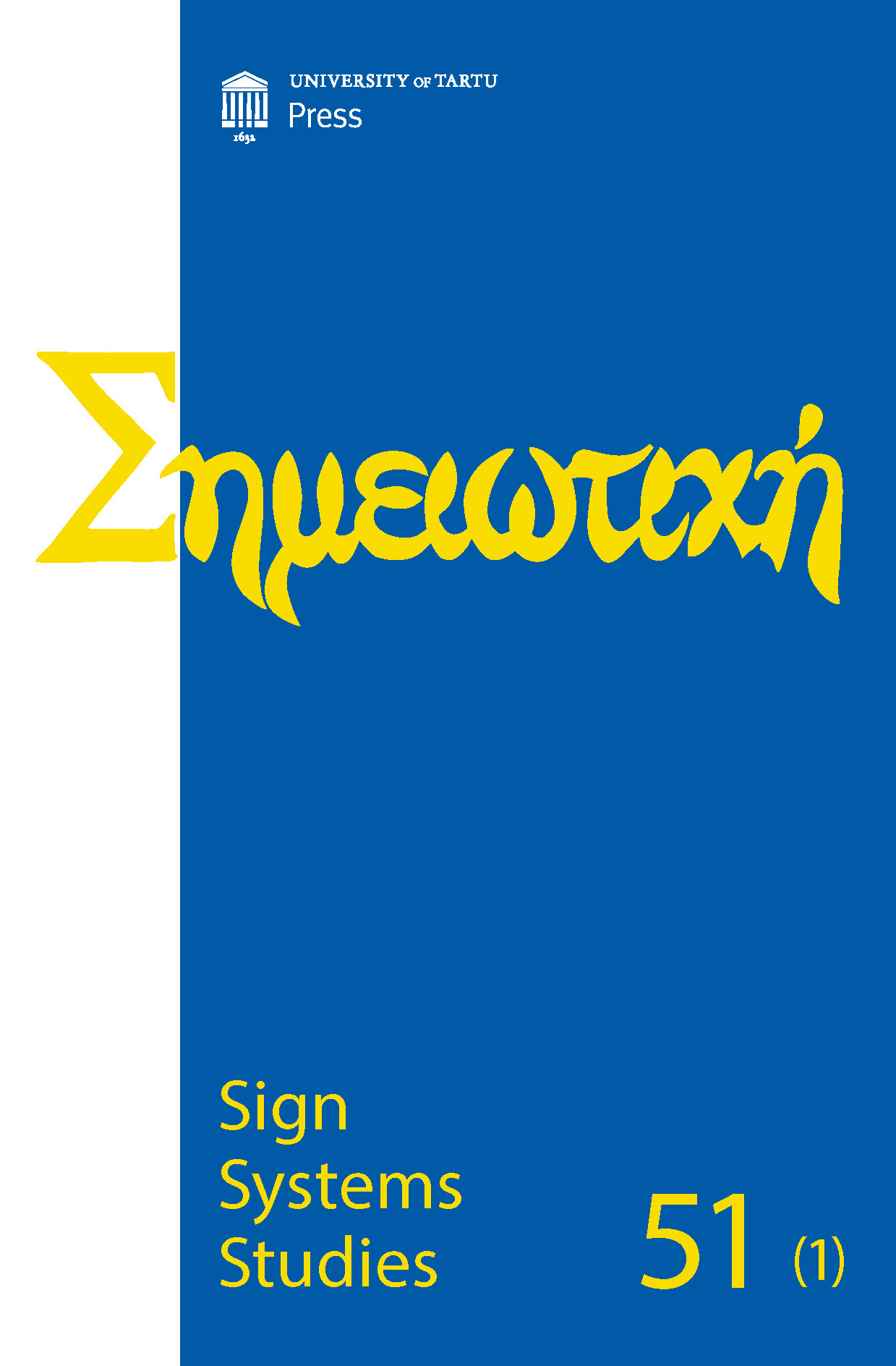Umwelt in an umwelt: Co-developing within immersive virtual environments and the paradoxical nature of reality and hyperreality
DOI:
https://doi.org/10.12697/SSS.2023.51.1.03Keywords:
intentionality, paradoxical thinking, design, nature, hyperreality, immersionAbstract
This paper examines how to model immersive virtual environments using Kalevi Kull’s ecosemiotic model of four degrees of nature. Using this theoretical model allows for an investigation into the paradoxical nature of reality and hyperreality, which is a novel approach to understanding how a user co-develops with both their physical and immersive virtual environments. Analysis for the four degrees of nature within the virtual space reveals that an immersive virtual environment emerges from an imaginative void, contains milieu that users can recognize and interact with, offers the action-potentiality (affordances) for altering and changing materials within the virtual space, and the reproductive nature which converges the boundaries of reality and hyperreality during the meaning-making process for users. Additionally, this paper elaborates how technological household goods in the past century have integrated texts into the cultural construct of a home. The paper identifies how immersive virtual environments alter an inhabitant’s perception and interactions within the home and explains how to model immersion, which is important for future research of user behaviour in the digital age of new media.


